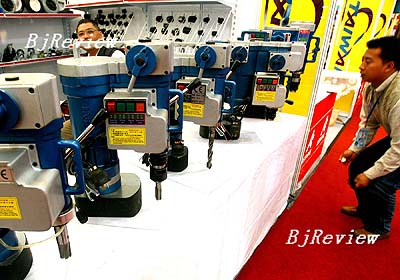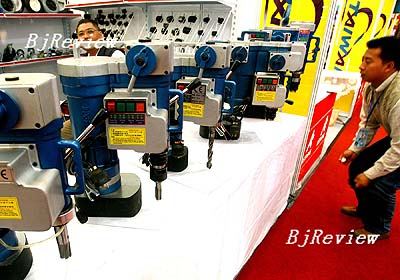|

Exports Dampened
China's export growth slowed down in September due to the government's export tax rebate cuts since July 1, announced China Customs.
Although the total export volume in September of $112.5 billion represented a year-on-year increase of 22.8 percent, the growth rate slowed by 4.9 percentage points compared with the first eight months.
Government policies to curb exports have been effective. Export goods on which tax rebates were canceled saw their export volume decline 6.3 percent to $1.36 billion in September.
FDI Steering
Foreign investors will be barred from some resource-intensive or high-polluting sectors and encouraged to invest in hi-tech and environmentally friendly projects, announced the National Development and Reform Commission, the country's top economic planner.
According the new Catalogue of Industries for Guiding Foreign Investment, which will take effect from December, foreign businesses are encouraged to invest in hi-tech sectors, equipment and new material manufacturing, as well as outsourcing and logistics.
Some traditional manufacturing sectors, in which domestic enterprises have developed advanced technologies and strong production capacity, have been removed from the category in which the government encourages foreign investment.
Accelerated RMB Appreciation Against Dollar
A report compiled by the Institute of Urban Finance under the Industrial and Commercial Bank of China has predicted that appreciation of the Chinese currency will accelerate.

The report, recently published in the China Securities Journal, stated that a recent interest rate reduction in the United States had not hindered China's prudent monetary policy for the time being, but over the long run the influx of liquidity into the country would quicken and cause the yuan to further appreciate.
The yuan broke the 7.45 mark on November 7, with the central parity rate at 7.4476 yuan against one U.S. dollar. It was the 68th new high the yuan had recorded since the start of this year, a four percent rise accumulatively.
Yellow Light for Heated Economy
China's macroeconomic performance index rose four points from August to hit 121.3 points in September, with some sectors entering the red and yellow light zones, meaning they are going a bit too fast, according to the National Bureau of Statistics (NBS).
The macroeconomic performance index pre-warning chart published by the NBS shows that the overall index was marked by a yellow light, with two sectors, industrial output and fiscal income, entering red light zones. Industrial output was for the first time labeled red after lingering in the yellow light zone for seven months in a row.
Two other sectors, namely residents' disposable income and consumer prices, were in the yellow light zone, while the remaining six sectors were all in the green light zone, indicating that they are stable.
Bank Card Boom
Chinese banks had issued more than 1.3 billion debit, credit and semi-credit cards by the end of September, roughly one for every person in China, according to China UnionPay, the only bankcard association in China.
Bankcard consumption as a percentage of China's total retail sales exceeded 18 percent in the first nine months as more Chinese opted for cards over cash, China UnionPay President Xu Luode told a forum on local finance.
China had 183 banks issuing cards that could be used at 1.08 million points of 650,000 specially endorsed outlets and 120,000 ATM machines.
The bankcard market is dominated by large national banks. Regional financial institutions control just nine percent of the market, with 190 million bankcards issued over the first half of this year. | 